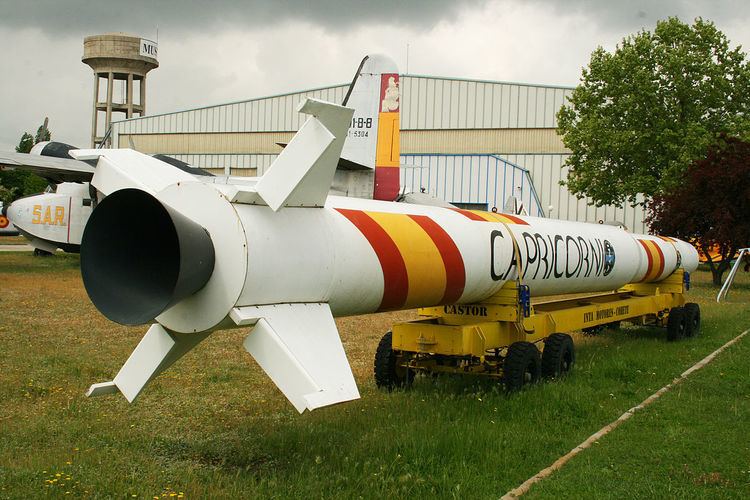Height 18.25 m Mass 15,035 kg | Country of origin Spain Diameter 1.00 m | |
 | ||
Manufacturer Instituto Nacional de Técnica Aeroespacial (INTA) | ||
Capricornio was a Spanish satellite launch vehicle developed by the Instituto Nacional de Técnica Aeroespacial (INTA) in the 1990s. It was expected to be a low cost solution to place up to 70 kg payloads into 600 km polar orbits or 60 to 140 kg payloads into low Earth orbit. Part of the technology was related to Argentina's Condor missile program.
Contents
Development
Configuration
Three-stage solid propellant launcher. Overall length of 18.25 m, body diameter of 1.0 m and weighs 15,035 kg at launch.
Projected flights
The first flight of Capricornio was scheduled to take place from El Hierro in late 1999 or 2000. It would carry two small satellites: Nanosat 01 (developed by the Polytechnic University of Madrid) and Venus (Polytechnic University of Madrid and other universities in Mexico and Argentina).
